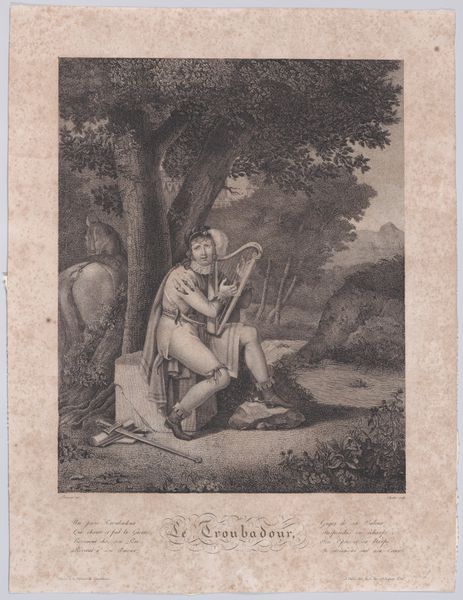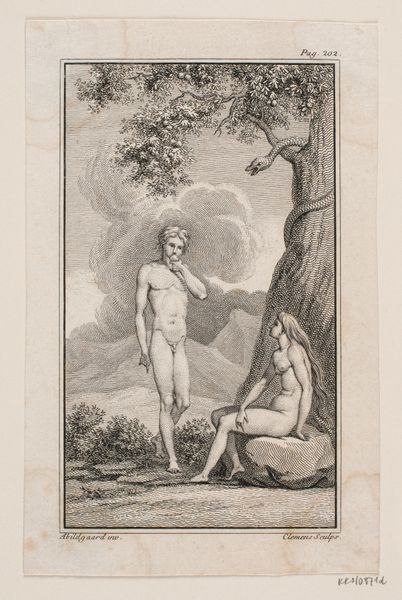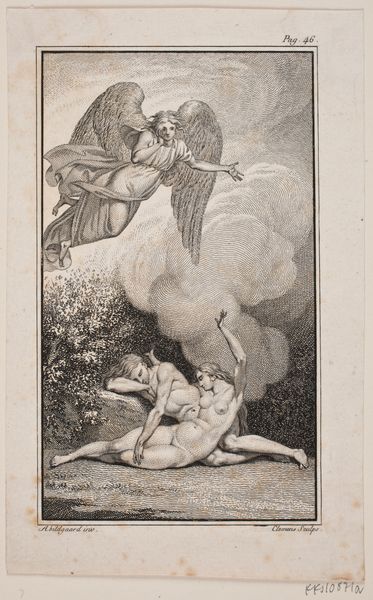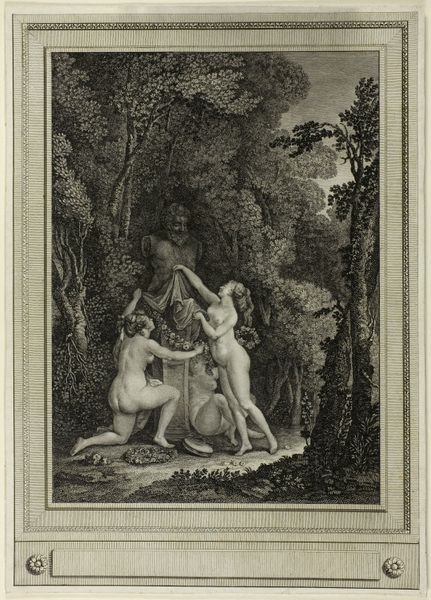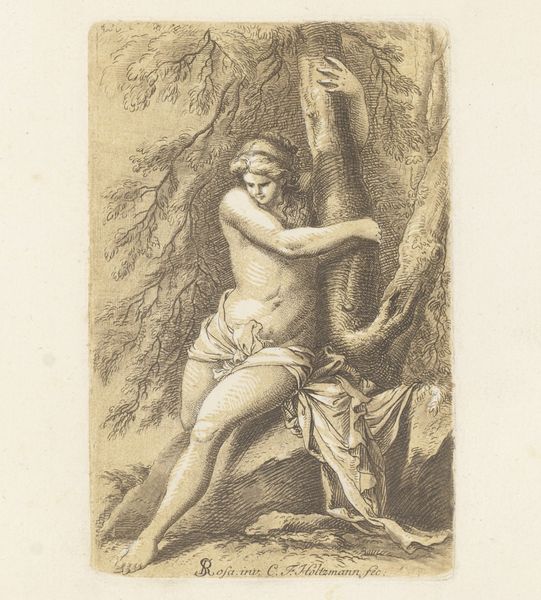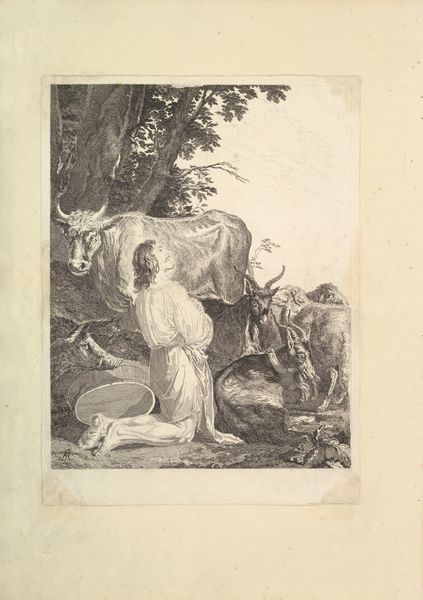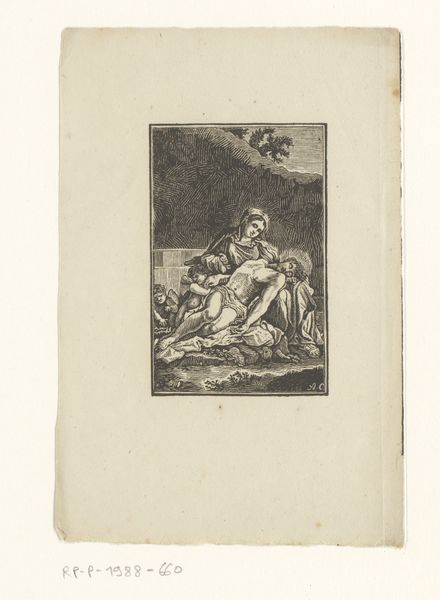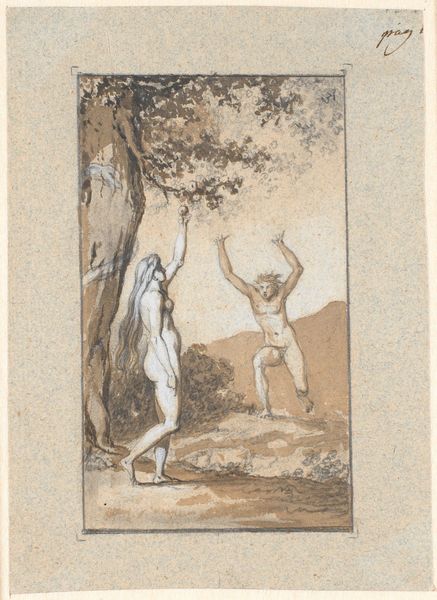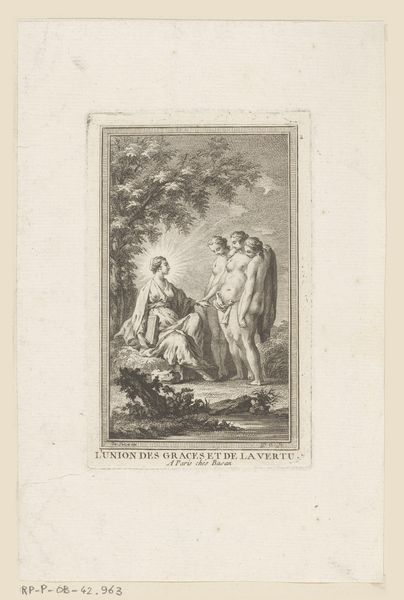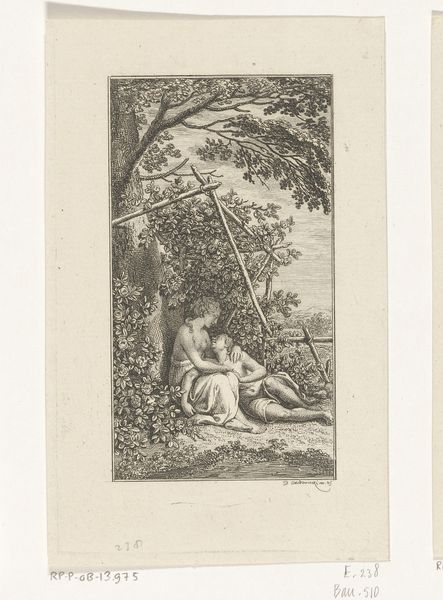
Dimensions: 132 mm (height) x 76 mm (width) (bladmaal)
Editor: This is Nicolai Abildgaard's "Adam spiser af træet" – Adam eating from the tree – created between 1777 and 1780, using pencil, ink, and watercolor. The subdued palette and delicate lines give the piece a dreamlike quality. What draws your eye, what stands out to you in terms of form and structure? Curator: The composition is immediately striking. Note how the artist uses a triangular arrangement to unite Adam, Eve, and the serpent coiled around the tree. This geometric structure provides an underlying framework that guides our eye. Further, observe the deliberate contrast between the shaded left side and the relatively open and luminous right side. How do you perceive the effect of that contrast? Editor: It makes the scene feel unbalanced, like something isn’t quite right. Almost as if innocence has been lost on one side. Curator: Precisely! And this sense of unease is amplified by Abildgaard’s subtle use of line. The figures are rendered with a fine, almost tentative touch, creating a sense of vulnerability. Do you see how Adam's pose echoes the serpent's form, almost mirroring it? Editor: I see it now. It’s like he's becoming something other than human, in that moment. The echoing stance definitely highlights the shift. What about the landscape? Curator: The landscape itself serves as more than mere backdrop. Its subtle gradations, the understated use of watercolor, generate an emotional register for the scene. The faint rendering of distant mountains and turbulent clouds further contributes to the somber mood, underlining the weight of their actions. This suggests an awareness of form's ability to be its own mode of significance. Editor: I hadn't noticed so much tension until you pointed out those choices. It makes me appreciate the artist's formal decisions even more. Curator: Indeed. Focusing on these elements reveals how Abildgaard uses line, composition, and tonal contrast to convey narrative weight. This exercise reminds us to consider form as intrinsic to meaning.
Comments
No comments
Be the first to comment and join the conversation on the ultimate creative platform.
